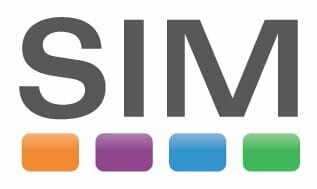Featured Authors, Tutorials
Frank Doorhof Featured Article : Angle Of Incidence | Studio Photography Tutorial
Let me start by introducing myself.
My name is Frank Doorhof and together with my wife Annewiek we run a photostudio in Emmeloord where I mostly focus on teaching workshops, recording tutorials and of course do photo shoots.
In my first article I want to talk about the so called angle of incidence is the angle of reflection, something that in essence is super simple but somehow is causing a lot of confusion and problems.
You probably know the problem when shooting someone wearing glasses and you can almost see the structure of your modifier in the glasses, or at least get some nasty reflections of your lights, so what’s going on and how can you solve it very easily.
First of all, you have to realize that everything you see through the viewfinder will also appear on the final image, so keep your eyes open and compose your shot while closely looking into the viewfinder. Believe it or not a lot of people don’t do this without really noticing.
Now in some cases you will keep seeing the reflections, take a deep breath and relax,….
Remember angle of incidence is angle of reflection?
This means that if you draw a triangle, you can pretty much predict when you will see a reflection, you have to make sure you are shooting under a different angle than the light hitting the surface. Now this sounds complicated but in essence it often just means that you place your lights slightly higher and aimed a bit more down, making the triangle really steep so from your shooting location you don’t see the reflections anymore.
Now do realize that sometimes it’s very nice to have a very slight reflection on glasses, but if you don’t want it, just placing your lights slightly higher will work like a charm.
This is also a tip I always share with photographers shooting events or personnel portraits for companies. Place your lights slightly higher than normal and use for example the TriFlection under the chest of the sitter, this way you will get a constant quality/look in your shots instead of having to adjust the lights for people wearing glasses, so in short, be prepared and set the lights up for people with glasses.
Now I hear you ask, “why not take the glasses out?”
Well that’s easy to explain, look at someone wearing glasses and you will quickly see that the face of that person looks slightly to a lot different from the face outside the glasses. So when they say that glasses define a person it’s actually not just the look of the glasses themselves but also how the face is rendered behind it, so always try to shoot a person with the glasses inside the frame.
And that angle of incidence is the angle of reflection works also with backgrounds by the way, this is actually one of the reasons I ended up with our friends from ClickPropsBackdrops. I met them in South Africa while teaching there on a tradeshow and I needed a background and they were so kind to lend me one. Now with most backgrounds that are printed you can/will get some hot spotting, and I love my photography a bit on the more contrasty side so I often work under conditions that can quickly end up reflecting the light back to the model via the background if I’m not careful and the background is reflective. Sometimes this is very faint, and on some backgrounds, you can really see the reflection. The thing that I immediately loved was that whatever lighting I used I didn’t find any annoying reflections.
I was honored when I was asked to create a signature series for them, and this is where this story comes full circle. One of my all-time favorite backgrounds is one you know as “Opulent Red”
What a lot of people don’t know is that I use the Click Props Backdrops background more than the original one. The original looks great but is a huge disaster to shoot, one of the assignments to our interns was to paint the wall a new color. She was super enthusiastic and really knew what I like because when it was done, I was literally going like “WOW” I can’t wait to…… mmmmm …. What paint did you use?
You probably already guessed it, she used the most reflective satin gloss paint she could find, the whole thing almost looks like a mirror under the right/wrong light. For the signature series I decided to shoot the background under an extreme angle and place the light beam under the opposite angle, in Photoshop I did a small correction and voila…. I can now use my own background a lot easier than the original.
As you can see if you follow the light you too will understand how the angle of incidence is the angle of reflection works, and trust me it will make your work a lot easier and most of all faster.

